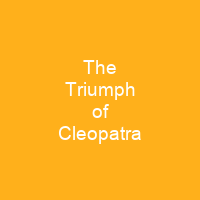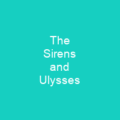The Triumph of Cleopatra: A Masterpiece by William Etty
Imagine a grand ship sailing through the waters, its sails billowing in the breeze as it carries a legendary queen to her destiny. This is exactly what English artist William Etty captured in his 1821 oil painting, The Triumph of Cleopatra. How could such an intricate and detailed work not make waves?
A Journey Through Time
Etty’s The Triumph of Cleopatra is a visual journey through history, blending the grandeur of ancient Egypt with the drama of Shakespearean tragedy. Plutarch’s Life of Antony and Shakespeare’s Antony and Cleopatra serve as the backdrop for this masterpiece. The painting depicts Cleopatra’s arrival in Tarsus, a bustling scene filled with figures on board the ship and on the shore, all eagerly awaiting her arrival.
The Artist’s Journey
William Etty was born in York in 1787. From an early age, he showed artistic promise, eventually becoming an apprentice printer before moving to London to study under Thomas Lawrence. His journey to success was not without its challenges; it wasn’t until his exhibition of The Coral Finder in 1820 that Sir Francis Freeling took notice and commissioned the ambitious Cleopatra.
A Masterpiece Unveiled
The Triumph of Cleopatra was an immediate success, catapulting Etty to fame. The painting’s intricate composition features numerous figures in various states of undress, creating a crowded and dynamic scene. Was it the sheer scale or the boldness of the subject matter that made this painting so captivating?
Influences and Techniques
The work draws inspiration from Titian, Rubens, and classical sculpture, with figures painted as groups to create a confused yet compelling mass. Etty’s biographer notes that Cleopatra contains enough material for three or four paintings of similar ambition but maturity. The scene includes sketches based on London imagery, such as a mother holding her baby and a crowd on a temple roof, while also incorporating elements from Old Master artworks like the putti in the sky.
A Controversial Gem
Upon its exhibition in 1821, Cleopatra was hailed as belonging to the highest class by The Gentleman’s Magazine. However, not everyone shared this sentiment; Blackwood’s Edinburgh Magazine criticized Etty for his use of mythological elements and suggested that “real boys dressed like Cupids” would have been more suitable.
A Legacy of Controversy
Despite the criticism, Etty continued to paint history paintings with nude figures. His monumental The Combat: Woman Pleading for the Vanquished was well-received in 1824, and he became a full Royal Academician in 1828 after defeating John Constable by eighteen votes to five. However, his style fell out of fashion in the late 19th century.
A Lasting Legacy
Today, The Triumph of Cleopatra remains a favorite among Etty’s admirers and is housed in the Lady Lever Art Gallery. It stands as a testament to Etty’s skill and his ability to capture both historical drama and human emotion on canvas.
In conclusion, William Etty’s The Triumph of Cleopatra is more than just a painting; it’s a window into the past, a reflection of its time, and a testament to an artist’s vision. How many stories can you tell with one brushstroke?
You want to know more about The Triumph of Cleopatra?
This page is based on the article The Triumph of Cleopatra published in Wikipedia (retrieved on November 29, 2024) and was automatically summarized using artificial intelligence.








